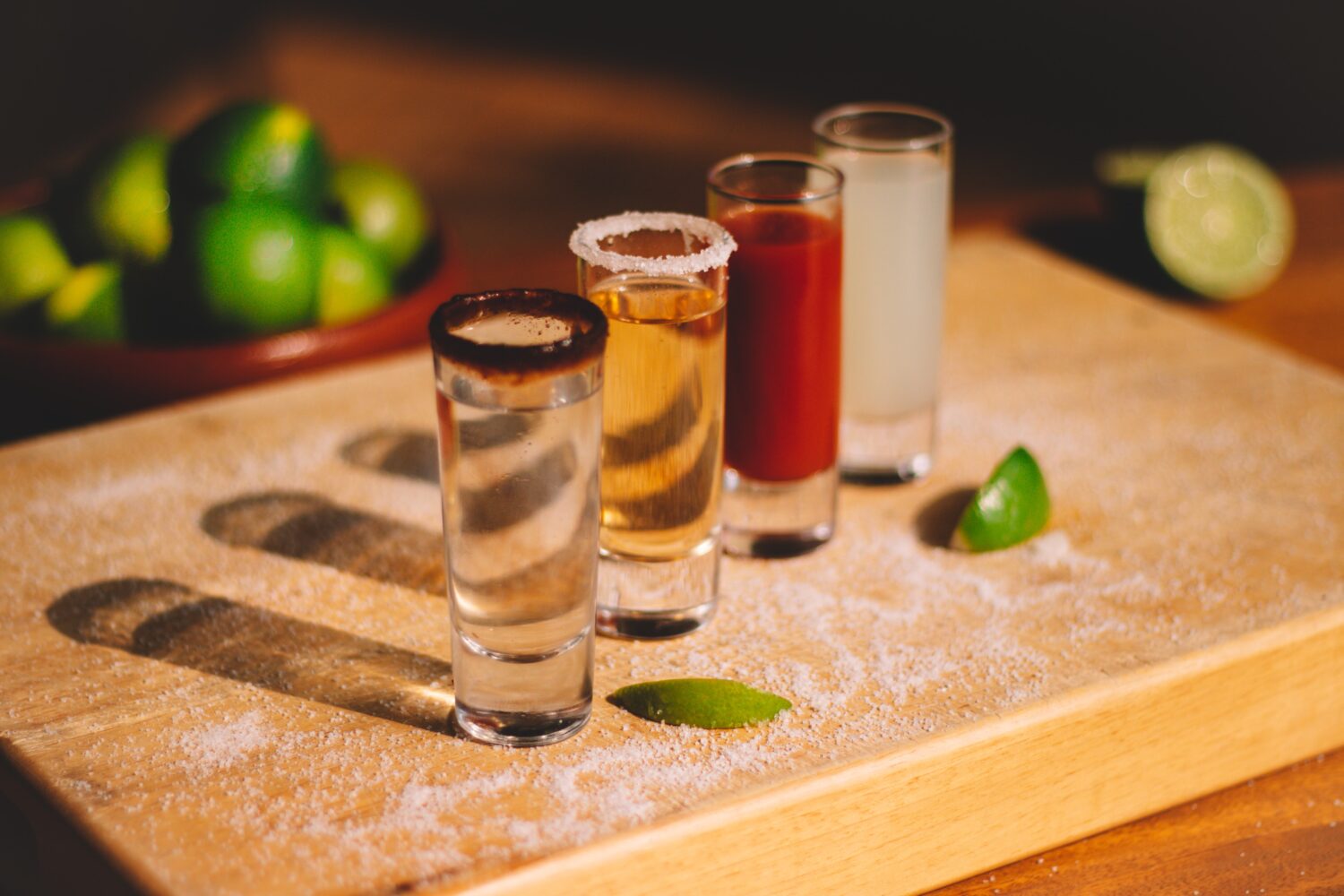When thinking about México one of the first things that come to mind is “Tequila”, our most famous and beloved spirit, but however magnificent, it is not the only Mexican Spirit.
In recent years Mezcal has been stepping on Tequila’s toes, gaining a lot of popularity not only inside the country but also around the world.
However, there’s a lot of confusion between Tequila and Mezcal, they have some similarities and some differences, and one of the most common questions I get asked by my foodie-friends is “Are Tequila and Mezcal the same thing?”
So follow me on a journey that will remove this question from your head for once and for all.
Mayahuel, Goddess of the Maguey.
The legend tells that the Ehécatl-Quetzalcóatl, The Cosmic Wind, paid a visit one night to the maiden Mayahuel in the sky, a beautiful Tzitzimitl star sleeping next to her sisters and grandmother who watched over them.
He spoke softly to her ear, as the wind does, whispering, and seduced her with his sweet words. The young Mayahuel, tired of her celestial paradise, agreed then to come down to the earth gliding on The Wind’s back.
Quetzalcóatl and Mayahuel became one in love’s embrace, and by doing so they transformed into a tree with two branches. The Tzitzimitl grandmother found her fugitive grandchild hidden inside the branch. Mad with rage, she tore the branch and fed it to her sisters.
The splinters, leftovers from the feast, were the bones of Mayahuel, which Quetzalcóatl picked up and buried. From the divine bones, the Maguey (or Agave) was born from the earth, the body of the Goddess Mayahuel, mother of the Centzon Totochtin (400 rabbits), who would provide sacred water in the arid plateau, moon-source in the center of the earth’s desolation.
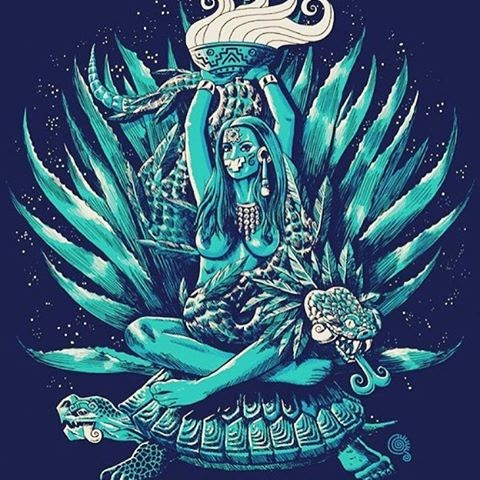
Credit: https://www.roma-condesa.com.mx
This is the legend of how this whole thing started, with the Agave or, as we call it in México, the Maguey. A sacred plant that 10,000 years ago was one of the most essential elements, along with Corn and Nopal, in developing prehispanic agriculture. From this plant they used everything, from its pests to its nectar, using it as a source of food, fiber, shelter, fabric, and beverages such as the sweet “Agua Miel” and the mythic “Pulque”.
Pul-What?!
Pulque, my foodies. Pulque for everyone. Pronounced Pool-keh.
Pulque has been manufactured in these lands since before the Spanish arrived in America.
The Mexica people used to cut open the center of the Maguey, and scrape its inner skin so it would release its sap and the people could drink it, this sap is what we know as “Agua Miel”. Little is known about Pulque’s actual origin, only legends that tell how Mayahuel taught a Maiden how to prepare it and how with it, she got the love of her suitor and got pregnant.
The most probable explanation about Pulque’s origin is just that the “Agua Miel” got fermented during transportation and then they noticed the effect this fermented drink had on them, warming their hearts and getting them in a “baby-making” mood…
In the times of the Spanish conquest, pulque became very popular as the drink of the indigenous Mexicas and has to the date remained as a tradition from the prehispanic times.
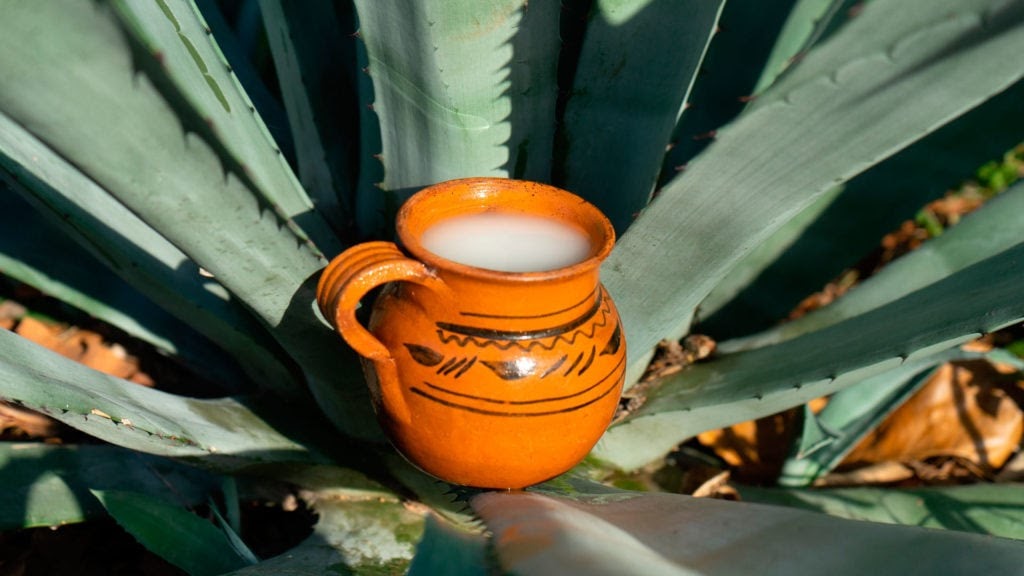
Credit: https://www.yaconic.com/pulque-la-bebida-ancestral-y-su-huella-en-la-actualidad/
Pulque is a fast fermenting drink, when you drink the alcohol content is very low, from 3% to 8%, however, Pulque’s magic is that it keeps fermenting as you digest it. Which means it creates more alcohol inside of you. That’s why I always advise caution with my fellow foodies from everywhere else in the world, it might not seem like much when you drink it but take it easy, or you’ll regret it the next day.
I gotta say it’s one of my favorite drinks, and I just, very recently, discovered there’s a new company that’s selling bottled Pulque and even exporting it to other countries! I literally saw the sign outside of a bar down Playa’s 5th ave and went straight in with my wife to get one each. I got the natural flavor, and she got one with Passion Fruit. Both were delicious and refreshing, 100% natural, just pulque and well, passion fruit for my wife’s. They’re not paying for this mention, but if you want to check them out this is their website: https://pencalarga.com/
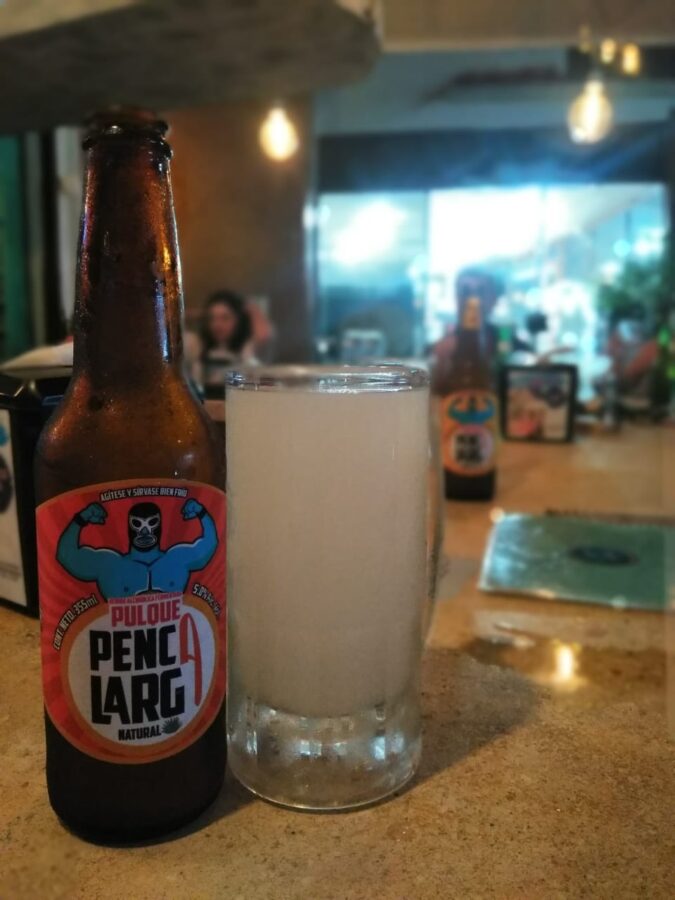
Mezcal
The word “Mezcal” comes from the Nahuatl word “Mexcalli”, which means “cooked maguey” and was originally used to refer to the meal the Mexica would eat from the Maguey 10,000 years ago.
It was until the 16th century that the distillation process came to these lands with the Spanish, and their copper stills they inherited from the Arabs, and so “Mezcal wine” the first Mexican distilled spirit was born.

Credit: http://www.todomezcal.com
Once the maguey is mature enough, the “Jimador” with his “Coa” cuts down all the leaves of the plant exposing its heart, know as “La Piña” (because it looks like a pineapple). The Piñas are then cooked in a traditional oven made in a hole in the ground where the buried agaves will slowly cook with the smoke of wood and the leaves of the maguey, infusing the drink with its traditional smoky flavor. After several hours or even days, the Piñas are removed from the oven and then crushed so they release all their juices to be fermented for days and finally distilled, at least twice so it can be enjoyed as a White Mezcal.
After that, the elixir can be stored in wooden barrels to rest and age, which will also add flavor and color as a result.

Credit: https://www.bloomberg.com
The most commonly used type of maguey for Mezcal is Agave Espadín, however, you can produce Mezcal from many different types of Maguey or even mixes, known as “ensembles”.
Over the course of history, new and different techniques have been developed to cook and process Mezcal, different types of ovens have been used and they give different results when it comes to taste. That means not every Mezcal has a smoky flavor, although it’s one of the most popular characteristics of this drink.
Tequila, Jalisco.
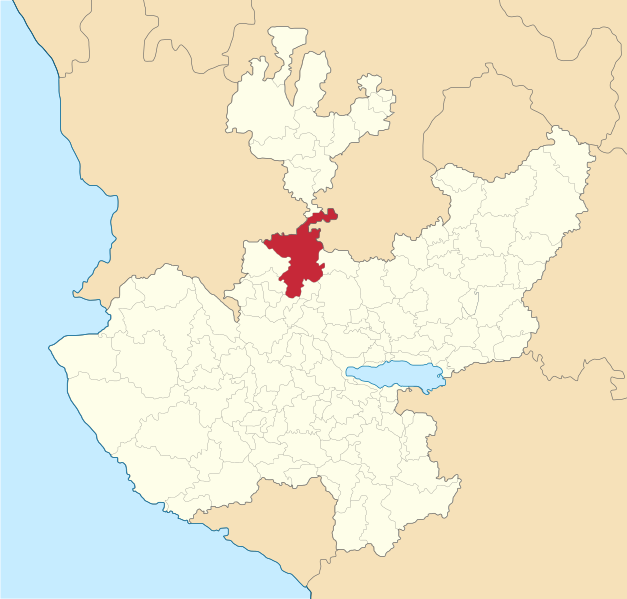
Credit: https://commons.wikimedia.org
Tequila, before being a drink, is a place in the Mexican state of Jalisco.
The name Tequila comes from the náhuatl word Tekilan, which means “Land of Workers”.
It’s an uneven territory with different reliefs full of diverse vegetation on the slopes of a volcano. This volcanic soil gave birth to a very special kind of Maguey: “Blue Tequilana Agave”.
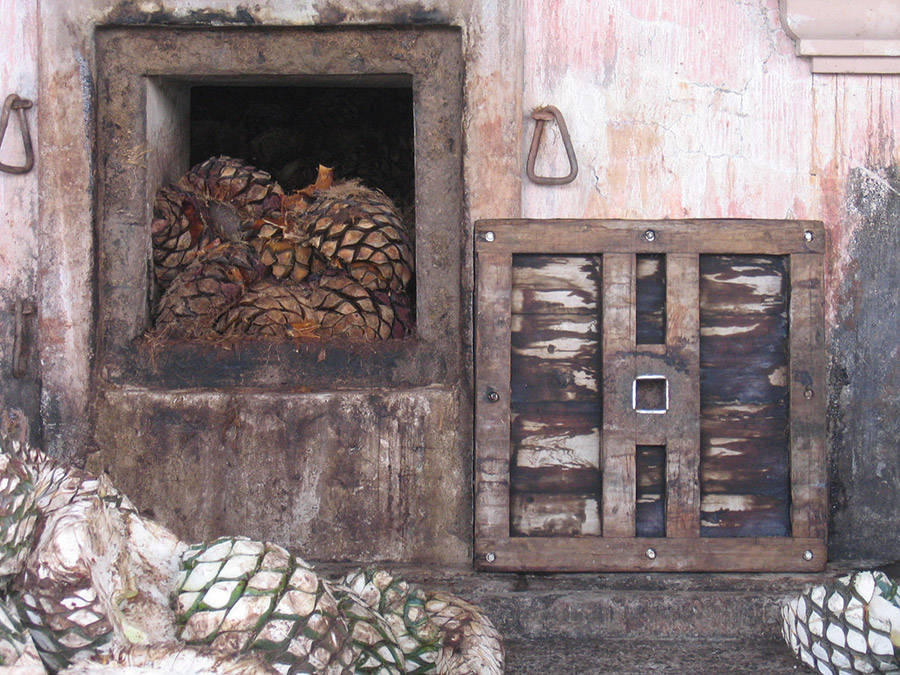
Credit: https://www.cyd.conacyt.gob.mx
The people of these lands, in the year 1600, started using masonry ovens to cook the agaves for their mezcal with steam instead of smoke. These two particularities: the specific type of agave cooked this way, gave this particular “Mezcal Wine” a very unique flavor, that set it apart from the rest and got rapidly known with the name of the place it came from “Tequila”!
In the 1940s Mexican government recognized Tequila and Mezcal as different origin denominations, which means Tequila or Mezcal can only come from specific places with those denominations. That moment in history set these two brothers on different paths and gave origin to the original question that brought us here.
Are Tequila and Mezcal the same? Well, in my #ProfessionalFoodie opinion, they kinda are but not really. There are many Mezcales, but there is only one Tequila, the most exclusive and, if you ask me, exquisite mezcal.

Credit: https://www.la-mejor-receta.com
Salud!
Well, all of this writing about these delicious elixirs has left me very thirsty, so I’m gonna pour myself a nice Tequila Blanco and toast to your health.
Now you know what to drink when you come to this beautiful country, and how to recognize Mayahuel’s children: Pulque, Mezcal, and Tequila, each of them with their unique magic. I hope you try em all and enjoy them more now that you’ve learned the traditions that gave birth to them.
Until next we meet my dear foodies, I wish you the best.
Salud y Buen Provecho!
The Juan and Only.


